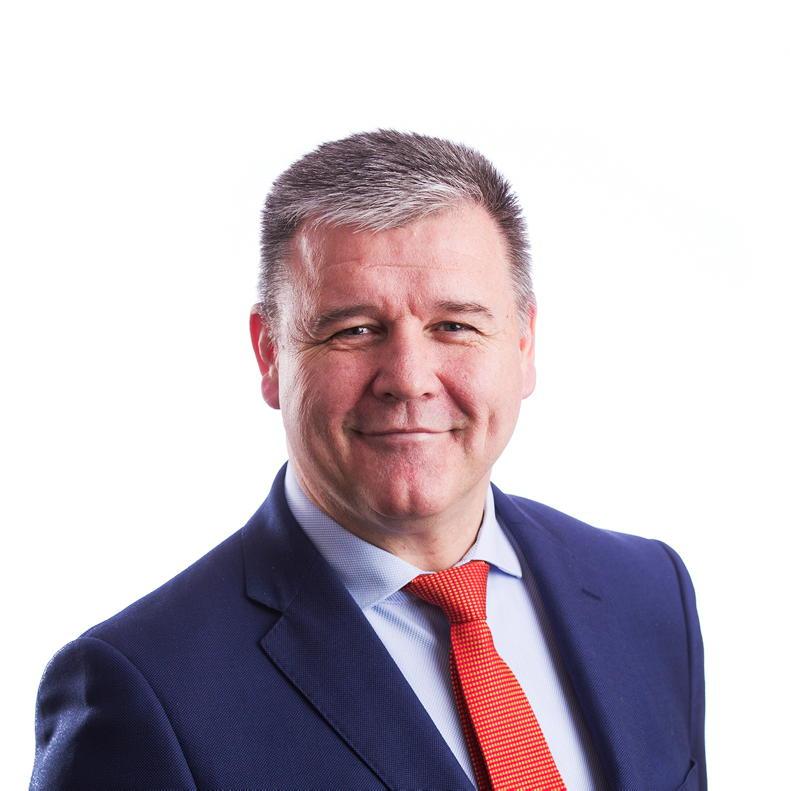Question: We were lucky enough to have a good year so far, and we have a bit of profit left over from the farm. To reduce my tax bill, I’m planning to make a last-minute contribution to my pension fund before the tax deadline.
However, I’m conscious that at this time of year, it can feel like you’re just rushing to meet a deadline instead of putting real thought into the contribution. I want to ensure I’m making the best financial decision too.
What are the key factors I should consider?
Answer: This is a great question for this time of year. The next few weeks will see a big increase in the number of people contributing to their pension funds. The driving force behind this increased activity is the ability to reduce your final tax bill for 2023 and/or your preliminary tax bill for 2024.
With tax savings of up to 40%, it is no surprise that many people avail of this tax relief.
First things first, don’t forget that the pay and file deadline is 31 October. However, if you file your tax return and pay tax online through ROS (Revenue Online System), that deadline is extended until 14 November.
The fact is that while deadlines give us focus, they have a downside – they can lead to quick and hasty decisions. In many cases, this tax deadline pressure leads to a lack of conversation about and understanding of the many other aspects of a pension plan.
It’s not just all about hitting the date. Many clients are left not knowing the key elements of their pension plans.
My top top-up questions
So, what should you actually ask about your pension fund when you’re topping it up? Here are four questions to help you get the conversation started.
1. What charges apply to my premium and fund?
You’ve worked hard for your money. So when you decide to put it aside for your retirement, you want to make sure you’re not getting hit with excessive charges. It’s important that you understand what charge applies to the premiums you pay, and also to your fund on an ongoing basis.
2. How much risk is being taken with my money?
Not to alarm anyone, but growth isn’t guaranteed. In 2008, managed pension funds fell an average of 34%. Hearing that your pension fund has fallen in value by 10%, 20%, or even 30%, can be a huge shock to the system. That’s why it’s really important to discuss your capacity and tolerance for risk with your financial advisor.
Make sure your funds are heavily diversified and check that the fund manager is protecting your money from sharp falls through risk management. Your money, your rules.

Martin Glennon, Head of Financial Planning with ifac.
3. When can I access my money?
Knowing when you’re likely to access your retirement funds will determine the time frame of your investment. This, in turn, affects your ability or capacity to take risk. The short version of the story is that the closer you are to retirement, the lower your risk is likely to be (and the lower it should be).
For Personal Pension Plans, which are used by sole traders, the earliest you can access your account is age 60.
Company Pensions will have a normal retirement age of between 60 and 70. However, under early retirement, it’s still possible to access your funds from age 50.
4. How can I access my money?
You’ll be entitled to take 25% of your fund as a tax-free lump sum (limited to a max of €200,000).
For Occupational Pension Schemes, it might be possible to access more than 25% as a tax-free lump sum. This will depend on your years of service and final salary with your employer.
With the balance of your fund, you will have two options:
Purchase an annuity or guaranteed income for lifeInvest in an Approved Retirement Fund (ARF)Which option you choose will have an impact on how your monies should be invested in the run-up to retirement.
It just makes sense
The tax you pay is often described as dead money. Saving for the future through a pension plan makes so much sense, particularly with the generous tax reliefs that are available.
So make sure you ask your financial advisor these questions. Don’t just roll with it. It’s your money – you need it to work for you, and you need to be comfortable with the level of risk applied.
Even if you have a higher risk tolerance, you’ll want to lower your risk the closer you are to retirement age. Age and stage matter.
Pensions are great, but without proper consideration around charges and risks, you might find that the benefits of the tax relief are quickly eroded. Don’t let that happen – ask the right questions, and you’ll reap the rewards.
1 in 3 farmers have no pension in place (ifac Irish Farm Report 2024). Without a private pension, after retirement you will rely on the state pension, currently €277.30 per week.43% cite affordability as the main reason for not having a pension, while similarly, a further 43% stated they never got around to organising it or would organise it at a future date (CSO Pension Coverage 2023).Martin Glennon, Head of Financial Planning Ifac, which is the professional services firm for farming, food and agribusinesses
Read more
Legal aspects of planting land
The tax implications of forestry
Question: We were lucky enough to have a good year so far, and we have a bit of profit left over from the farm. To reduce my tax bill, I’m planning to make a last-minute contribution to my pension fund before the tax deadline.
However, I’m conscious that at this time of year, it can feel like you’re just rushing to meet a deadline instead of putting real thought into the contribution. I want to ensure I’m making the best financial decision too.
What are the key factors I should consider?
Answer: This is a great question for this time of year. The next few weeks will see a big increase in the number of people contributing to their pension funds. The driving force behind this increased activity is the ability to reduce your final tax bill for 2023 and/or your preliminary tax bill for 2024.
With tax savings of up to 40%, it is no surprise that many people avail of this tax relief.
First things first, don’t forget that the pay and file deadline is 31 October. However, if you file your tax return and pay tax online through ROS (Revenue Online System), that deadline is extended until 14 November.
The fact is that while deadlines give us focus, they have a downside – they can lead to quick and hasty decisions. In many cases, this tax deadline pressure leads to a lack of conversation about and understanding of the many other aspects of a pension plan.
It’s not just all about hitting the date. Many clients are left not knowing the key elements of their pension plans.
My top top-up questions
So, what should you actually ask about your pension fund when you’re topping it up? Here are four questions to help you get the conversation started.
1. What charges apply to my premium and fund?
You’ve worked hard for your money. So when you decide to put it aside for your retirement, you want to make sure you’re not getting hit with excessive charges. It’s important that you understand what charge applies to the premiums you pay, and also to your fund on an ongoing basis.
2. How much risk is being taken with my money?
Not to alarm anyone, but growth isn’t guaranteed. In 2008, managed pension funds fell an average of 34%. Hearing that your pension fund has fallen in value by 10%, 20%, or even 30%, can be a huge shock to the system. That’s why it’s really important to discuss your capacity and tolerance for risk with your financial advisor.
Make sure your funds are heavily diversified and check that the fund manager is protecting your money from sharp falls through risk management. Your money, your rules.

Martin Glennon, Head of Financial Planning with ifac.
3. When can I access my money?
Knowing when you’re likely to access your retirement funds will determine the time frame of your investment. This, in turn, affects your ability or capacity to take risk. The short version of the story is that the closer you are to retirement, the lower your risk is likely to be (and the lower it should be).
For Personal Pension Plans, which are used by sole traders, the earliest you can access your account is age 60.
Company Pensions will have a normal retirement age of between 60 and 70. However, under early retirement, it’s still possible to access your funds from age 50.
4. How can I access my money?
You’ll be entitled to take 25% of your fund as a tax-free lump sum (limited to a max of €200,000).
For Occupational Pension Schemes, it might be possible to access more than 25% as a tax-free lump sum. This will depend on your years of service and final salary with your employer.
With the balance of your fund, you will have two options:
Purchase an annuity or guaranteed income for lifeInvest in an Approved Retirement Fund (ARF)Which option you choose will have an impact on how your monies should be invested in the run-up to retirement.
It just makes sense
The tax you pay is often described as dead money. Saving for the future through a pension plan makes so much sense, particularly with the generous tax reliefs that are available.
So make sure you ask your financial advisor these questions. Don’t just roll with it. It’s your money – you need it to work for you, and you need to be comfortable with the level of risk applied.
Even if you have a higher risk tolerance, you’ll want to lower your risk the closer you are to retirement age. Age and stage matter.
Pensions are great, but without proper consideration around charges and risks, you might find that the benefits of the tax relief are quickly eroded. Don’t let that happen – ask the right questions, and you’ll reap the rewards.
1 in 3 farmers have no pension in place (ifac Irish Farm Report 2024). Without a private pension, after retirement you will rely on the state pension, currently €277.30 per week.43% cite affordability as the main reason for not having a pension, while similarly, a further 43% stated they never got around to organising it or would organise it at a future date (CSO Pension Coverage 2023).Martin Glennon, Head of Financial Planning Ifac, which is the professional services firm for farming, food and agribusinesses
Read more
Legal aspects of planting land
The tax implications of forestry










SHARING OPTIONS